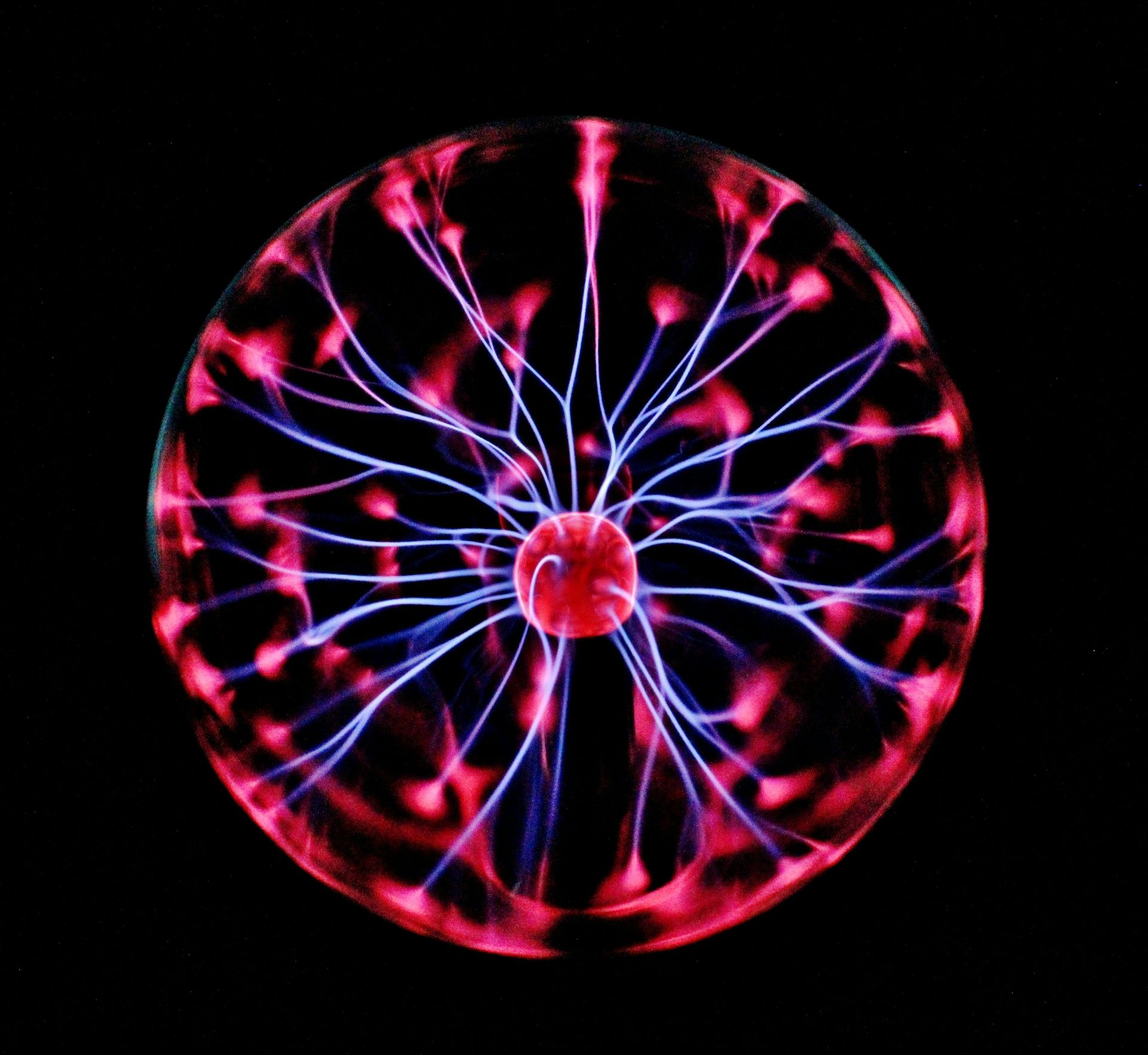Why Mitochondria Might Be the Missing Link to Your Energy, Fat Loss & Healing
The Cellular Secret to Energy, Hormone Balance, and Lasting Fat Loss

Everyone’s talking about mitochondria lately.
Scroll through Instagram or TikTok, and you’ll see wellness influencers dropping mitochondria buzzwords.
- Supplement companies are launching “mito-boost” formulas.
- Biohackers are showing off red-light saunas and cold plunges, claiming they’re “charging their cellular batteries.”
But what’s all the hype really about — and is it just another shiny trend in the wellness world?
Here’s the thing: mitochondria aren’t some new wellness fad. They’ve been inside your cells since the day you were born. But science is finally catching up to what functional medicine has been saying for decades — when your mitochondria aren’t working well, nothing in your body works the way it should.
If your energy feels like it’s on permanent low-battery mode, your fat loss has stalled no matter what you eat, your brain feels foggy, or your recovery takes longer than it used to — the problem might not be you. It might be your mitochondria. These tiny powerhouses inside every cell control how much energy you have, how balanced your hormones are, and even how fast you age. When they are sluggish. You feel it everywhere. The good news? You can reset them - and when you do, everything shifts: energy metabolism, mood, and fat loss.
What Are Mitochondria & Why Do They Matter?
Think of your cells like tiny cities. Inside each one are power plants — that’s your mitochondria. Their job? To take in oxygen and nutrients from the food you eat and turn them into ATP, your body’s energy currency. ATP is the reason your heart beats, your lungs expand, your muscles contract, and your brain fires off thoughts. Without ATP, you’d have no movement, no healing, no life.
And it’s not just about energy. Mitochondria are central to how your body handles inflammation, repairs damage, and even determines how quickly you age. Harvard Health has noted their role in immunity, metabolism, cardiovascular health, and chronic disease prevention.
Here’s what that means in real life:
- Healthy mitochondria help you wake up with steady energy and keep it throughout the day.
- Dysfunctional mitochondria can make you feel like you’re dragging through wet cement by 2 p.m. — even with coffee in hand.
And here’s the kicker — tissues with the highest energy demand (brain, heart, muscles, immune cells) have the most mitochondria. When they’re not thriving, you feel it everywhere.
Fun fact: the average cell contains 100–1,000 mitochondria, but heart cells can have up to 5,000 each — because they literally never stop working.
Hormone connection: mitochondria are highly sensitive to thyroid and estrogen signals, which is why energy and recovery can change dramatically in your 40s and during menopause.
Aging connection: scientists now consider mitochondrial dysfunction one of the “9 hallmarks of aging.” Translation: if you want graceful aging, mitochondria are the front line.
Mitochondria & Hormones: The Cellular Power Couple
Most people think of mitochondria as the “energy batteries” of the body. True — but that’s only half the story. These little powerhouses don’t just fuel your cells… they also control your hormones. And when your mitochondria are weak, your entire hormone orchestra falls out of tune.
Mitochondria Make Hormones Possible
Every hormone begins its life as cholesterol. Inside your mitochondria, cholesterol is converted into pregnenolone — the “mother hormone” that branches into cortisol, estrogen, progesterone, testosterone, and thyroid hormones.
- If mitochondria are sluggish → you can’t make enough pregnenolone.
- That means sex hormones crash, stress hormones misfire, and thyroid output flatlines.
Low energy isn’t just “being tired” — it’s often your mitochondria failing to make the very hormones that run your body.
Warrior Wisdom: “If your mitochondria are starved, your hormones are starving too.”
Stress Hormones Depend on Mitochondria
Your adrenal glands are packed with mitochondria. Why? Because cortisol — your main stress hormone — is made there.
- When mitochondria are strong → cortisol rises in the morning (energy) and falls at night (sleep).
- When mitochondria are weak → the cortisol curve flattens. You wake up exhausted, drag through the day, and get a “second wind” at night that wrecks sleep.
This is why women with adrenal fatigue often feel like they’re “tired but wired.”
Warrior Wisdom: “Heal the mitochondria, and your stress stops controlling you.”
Mitochondria Drive Insulin Sensitivity
Mitochondria are responsible for burning both glucose and fat.
- Healthy mitochondria = your cells use energy efficiently → balanced blood sugar, better metabolism.
- Damaged mitochondria = fuel can’t get burned → blood sugar rises, insulin spikes, fat gets stored.
- Over time, this spirals into insulin resistance → PCOS, estrogen dominance, stubborn belly fat.
If you’ve been told “just eat less and move more,” but nothing changes, it’s because insulin resistance starts at the mitochondrial level.
This is why women can "eat healthy", but still feel inflamed, bloated, and stuck. It isn't always about calories - it is about whether your mitochondria can actually process the fuel you give them. If they are weak, the food that should energize you ends up working against you.
Warrior Wisdom: “It’s not your willpower. It’s your mitochondria.”
Thyroid & Mitochondria Speak the Same Language
Your thyroid sends the signal for your metabolism through T3 — the active thyroid hormone.
- T3 tells mitochondria: “Turn up energy production.”
- If mitochondria are sluggish, they can’t respond → you feel hypothyroid (fatigue, weight gain, brain fog) even with “normal” labs.
- If thyroid is underactive, mitochondria don’t get the signal → everything slows down.
This is why so many women feel hypo despite “fine” bloodwork — their mitochondria can’t hear the message. Doctors check the thyroid numbers, but if the mitochondria can't hear the message, your body still feels stuck in slow motion. Supporting mitochondria makes your thyroid medication, supplements, and lifestyle changes actually work.
Warrior Wisdom: “A thyroid without mitochondria is like a conductor with no orchestra.”
Estrogen & Progesterone Protect Mitochondria
Sex hormones don’t just rely on mitochondria — they protect them.
- Estrogen improves mitochondrial efficiency and antioxidant defenses. That’s why women often feel more resilient before menopause.
- Progesterone helps mitochondria balance their response to stress.
- As both decline in perimenopause/menopause → mitochondria lose their bodyguards → hot flashes, fatigue, brain fog, fat gain.
Supporting mitochondria during hormonal transitions is one of the best ways to protect energy, mood, and metabolism. This is one reason women often feel a dramatic shift in their 40s and 50s. It isn't just "hormones dropping" - it is the fact that their mitochondria suddenly lose protection. Without that shield, oxidative stress skyrockets and symptoms explode. By protection mitochondria during this transition, you can slow the aging curve and keep energy, mood, and metabolism more stable.
Warrior Wisdom: “Protect your mitochondria, and they’ll protect you through every season of womanhood.”
The Big Picture: Why This Matters
Mitochondria aren’t just batteries — they’re the control center of your hormones. If they’re underfed, over-stressed, or damaged by toxins, you will feel it as fatigue, mood swings, PMS, weight gain, and brain fog.
The good news? Mitochondria respond quickly when given the right inputs: protein-first nutrition, sleep alignment, detoxing your environment, movement that builds strength, and practices that regulate stress.
That’s why in my Warrior Reset programs, we always circle back to mitochondria. Because when your mitochondria heal, your hormones wake up, and your body finally remembers how to thrive. Everything ties back here. Whether it is stress, hormones, sleep, or ageing - mitochondria are the common denominator. Heal them, and you change the trajectory of your health. Ignore them, and every quick fix just feels like spinning your wheels.
Mitochondria, Hormones & Aging
Aging isn’t just about the number of candles on your cake — it’s about the rate at which your cells break down. And at the core of that process are your mitochondria.
Mitochondria = Your Cellular Clock
- Every cell depends on mitochondria for energy.
- As mitochondria weaken with age (a process called mitochondrial dysfunction), your body can’t repair as fast, detox as efficiently, or regulate hormones as smoothly.
- This is why women in their 40s and 50s often feel like they’re “falling apart” — energy dips, hot flashes, belly fat, brain fog — it’s not just hormones, it’s the mitochondria running the show.
Warrior Wisdom: “Aging accelerates when your mitochondria slow down.”
Hormones Age With Your Mitochondria
- Estrogen & Progesterone:
- Before menopause, they act like bodyguards for your mitochondria, keeping them efficient and resilient. As levels drop, mitochondria lose protection — leading to more oxidative stress, less energy, and faster visible aging (wrinkles, skin thinning, joint pain).
- Testosterone:
- Essential for muscle and bone strength, testosterone also declines as mitochondria weaken — causing sarcopenia (muscle loss), fatigue, and slower recovery.
- Thyroid: Aging thyroid + aging mitochondria = a double hit to metabolism. Even if labs are “normal,” your body may feel stuck in slow motion.
Muscle is Anti-Aging Medicine — Powered by Mitochondria
- Muscle is metabolically active tissue — it burns fat, stabilizes blood sugar, and protects against frailty.
- Building and protecting muscle requires healthy mitochondria.
- When mitochondria decline → you lose muscle faster (sarcopenia) → your metabolism, independence, and resilience decline too.
This is why strength training + mitochondrial health = your best anti-aging strategy.
Warrior Wisdom: “Strong mitochondria = strong muscle = strong future.”
Mitochondria & Brain Aging
- The brain is one of the most mitochondria-hungry organs in the body.
- Weak mitochondria → memory lapses, slower focus, mood swings.
- Strong mitochondria → sharper thinking, calmer moods, protection against neurodegeneration.
Mitochondria Determine Your “Biological Age”
You can be 45 with sluggish mitochondria and feel 65. Or you can be 65 with resilient mitochondria and move like you’re 40.
- Lifestyle choices (sugar, alcohol, toxins, poor sleep, chronic stress) age mitochondria faster.
- Warrior choices (protein-first, detox, sleep hygiene, stress resets, strength training) preserve them.
Warrior Wisdom: “Your real age is written in your mitochondria, not your birth certificate.”
The Takeaway on Aging
You don’t have to accept fatigue, hormone chaos, or decline as “normal aging.” What most people call aging is really mitochondrial dysfunction. By protecting and repairing your mitochondria, you slow the clock on hormones, metabolism, and vitality.
That’s why my programs — from the 7-Day Reset to the 30-Day Guide and the Flagship Warrior Wellness Method — always circle back to mitochondrial health. Because when your mitochondria thrive, you don’t just add years to your life… you add life to your years.
How Mitochondria Get Messed Up
Here’s the hard truth: modern life is rough on your mitochondria. It doesn't just tire you out - it damages your mitochondria.
Factors like chronic inflammation, blood sugar rollercoasters, toxin exposure, nutrient deficiencies, poor sleep, high stress, and even too much sitting can damage their structure and slow their energy output. Over time, this can lead to something called mitochondrial dysfunction — where your cells struggle to meet the energy needs of your body. They literally choke off your energy at the cellular level.
As we age, the natural clean-up process called mitophagy — where your body recycles old, damaged mitochondria — slows down. It’s like letting broken machines pile up in your factory, making it harder for the good ones to keep up.
If you’ve ever wondered why it’s harder to bounce back after a late night or recover from a workout the way you used to — that’s a mitochondria story.
This is where functional medicine steps in - instead of chasing all the symptoms, I teach you how to remove these blocks and rebuild energy at the source.
Small Shifts That Make a Big Difference
The exciting part? Mitochondria are incredibly adaptable. They can respond and improve when you give them the right signals - They respond FAST to new inputs.
- Exercise — Activities like HIIT, interval walking, and strength training send a message to your body: “We need more energy capacity!” Your body responds by making more and healthier mitochondria, especially in your muscles. Even just a few short, intense bursts can trigger these changes. PubMed studies show HIIT can increase mitochondrial density by up to 50% in weeks.
- Nutrition — Think anti-inflammatory, whole-food nutrition: grass-fed proteins for amino acids, antioxidant-rich vegetables and berries, and healthy fats like olive oil and avocado. Stable blood sugar matters, too — big spikes and crashes can stress mitochondria over time.
- Protein supports amino acids needed for mitochondrial enzymes.
- Stable Blood Sugar: Every insulin spike creates stress.
- Lifestyle — Sleep is when your mitochondria repair themselves. Deep, restorative sleep allows for maximum recovery. Stress management is equally important; chronic high cortisol can damage mitochondrial function. And minimizing toxin exposure (like synthetic fragrances, pesticides, and seed oils) helps protect their delicate membranes.
Real-life takeaway: You don’t need a perfect day to support mitochondria. Ten minutes of strength work in your living room, swapping your cooking oil, or getting outside in morning sunlight can all send positive signals.
Daily Warrior Mito Hacks:
- Morning sunlight → boosts circadian rhythm + mitochondria performance
- Cold exposure (30s cold shower) → stimulates mitochondrial creation
- Deep nasal breathing → more oxygen = more cellular fuel
- Grounding (bare feet on the earth) → can reduce inflammation that harms mitochondria
- Laughter + joy → reduce oxidative stress, supporting healthier cells
- Strength train → lift heavy things in a progressive overload
Want to take a deeper dive? We do this in my 1:1 coaching programs.
4. Supplements That Can Support (With Caution)
While lifestyle is the foundation, certain supplements can help support mitochondrial function — especially if your body needs an extra nudge.
- CoQ10 (Coenzyme Q10): This is a key part of the mitochondrial energy chain and a powerful antioxidant. Research (including the Q-Symbio trial) shows it can improve heart health and energy in certain populations. I often think of CoQ10 as “oil for your engine.”
- PQQ (Pyrroloquinoline Quinone): Promotes mitochondrial creation — literally helping your body make new ones — and supports antioxidant defense. Early research is promising, especially when combined with CoQ10.
- Urolithin A: A newer player in the wellness world, Urolithin A helps stimulate mitophagy — cleaning up damaged mitochondria so the healthy ones can do their job more efficiently.
These aren’t magic pills. They work best when paired with a solid foundation of nutrient-rich food, movement, and recovery. And like everything, supplements need to be individualized — especially if you’re on medications or have health conditions. I personally use Fullscript for all my supplement needs. You can create your free account and brows your favorite brands. Here I can also send you personalized recommendations based on your specific needs.
We go into Mitochondrial support much deeper in my 1:1 coaching programs. I help you figure out whether you actually need supplements - and if so, which ones match your personal needs. Stop wasting money on bottles that don't move the needle.
5. The Bigger Functional-Wellness Picture
Mitochondrial health doesn’t live in a vacuum — it’s connected to every system in your body. That’s why in my Freedom Wellness Warrior Method, we don’t just throw supplements at symptoms. We look at:
- Reducing inflammation so mitochondria aren’t constantly under attack.
- Restoring nutrient density so they have the raw materials to make energy.
- Supporting systemic repair so damaged cells are cleared and replaced efficiently.
This isn’t about living in a bubble. It’s about creating resilience so that when life throws stress, travel, or late nights at you — your body can adapt and bounce back.
True healing = reducing the inflammation, restoring nutrient density, and supporting cellular cleanup.
Mitochondria for Women: Skin, Hormones, and Longevity
Most women don’t realize mitochondria play a role far beyond energy and fat loss. They’re deeply connected to how you age, glow, and balance hormones.
- Skin Health & Collagen → Mitochondria fuel fibroblasts, the cells that make collagen + elastin. When mitochondria are weak, skin looks dull and loses elasticity. Protecting mitochondria = protecting your glow.
- UV Defense → Short, safe sunlight exposure boosts mitochondria, but overexposure overwhelms them. Pairing antioxidants (like vitamin C and polyphenols from berries or green tea) with sun helps preserve both mitochondria and collagen.
- Estrogen & Energy → Estrogen is naturally protective of mitochondria. That’s why energy, sleep, and recovery can shift during perimenopause/menopause as estrogen dips. Supporting mitochondria helps ease that transition
- Progesterone + Thyroid Connection → Both directly influence mitochondrial energy production. When they’re out of balance, fatigue and stubborn weight gain show up fast.
- Red Light Therapy → Beyond recovery, red/NIR light has been shown to improve skin elasticity, support ovarian and thyroid tissue, and enhance overall energy output. I love Bon Charge for Red Light Therapy and PEMF therapy.
- Breath & Oxygen → Many women live in shallow chest-breathing mode. Deep diaphragmatic breathing literally fuels mitochondria with oxygen they need to create energy.
his is the piece most blogs miss: mitochondria aren’t just about “biohacking” for more energy — they’re about graceful aging, hormone balance, and glowing skin from the inside out. This is why women feel "crazy" when they hit their 30s, 40s, or menopause - no one ever told you mitochondria drive the whole show. In my programs, I help you connect these dots so you finally understand your body and know exactly how to fix it.
The Takeaway for You
If your life feels like a juggling act — and your energy, metabolism, or focus just can’t keep up — it’s worth looking at your mitochondria.
Start with three simple steps:
- Move with purpose — even if it’s short bursts.
- Eat for energy stability — focus on quality proteins, healthy fats, and colorful plants.
- Protect your recharge time — guard your sleep and reduce chronic stress where you can.
Because when your mitochondria thrive, you thrive. That’s not hype — that’s your body’s design.
Warrior Philosophy: Healing doesn’t start with chasing symptoms. It starts with charging your body at the cellular level — so everything else flows.
Next-Level Warrior Hacks for Maximizing Mitochondria
If you’ve got the basics covered and want to go deeper, here are some often-overlooked strategies that take your mitochondrial health to the next level:
- Protein Timing & Quality → Mitochondria repair and enzyme function require amino acids. Aim for 30g of protein at breakfast to kickstart energy and hormone balance.
- Electrolytes & Minerals → Magnesium, potassium, and sodium are essential for ATP production. Try a clean, sugar-free electrolyte drink instead of another cup of coffee.
- Gut-Mitochondria Axis → Healthy gut bacteria produce short-chain fatty acids (like butyrate) that directly feed mitochondria. Fiber-rich veggies and fermented foods can boost this connection.
- Circadian Rhythm Sync → Mitochondria follow your body clock. Late-night scrolling or snacking blunts their function. Close the kitchen 2–3 hours before bed + dim lights at night.
- Heat Therapy (Sauna) → Heat shock proteins protect and repair mitochondria. Even short sauna sessions mimic some exercise benefits at a cellular level.
- Cold Contrast → Alternating hot/cold (contrast therapy) stimulates mitochondrial growth and resilience. End a warm shower with 30s cold for a quick hack.
- Mindset & Nervous System Regulation → Chronic fight-or-flight drains mitochondria. Breathwork, prayer, meditation, or grounding before bed helps reset them for repair.
Most people never hear about these, but they can be game changers when layered onto the foundations.
Your Next Step
And if you want a plan that works with your real, messy life? That’s exactly what I help my clients create — one that supports the science and fits into school runs, business calls, and soccer games.
That’s why I created my 7-Day Wellness Warrior Reset. Inside, you’ll get the exact food, movement, and recovery practices that send your mitochondria the signals they need to fire up.
More clarity. More energy. More resilience.
And when you’re ready to go deeper — into hormone balance, aging resilience, and a full Warrior lifestyle — my 30-Day Warrior Method expands this work into lasting transformation.
Nicole Kelley, RN, NC, BCHHP
The Nurse Wellness Warrior
nicole.thenursewellnesswarrior



